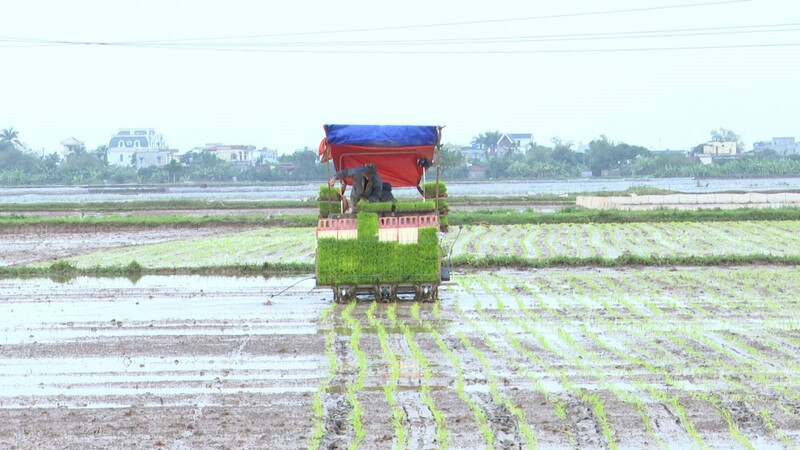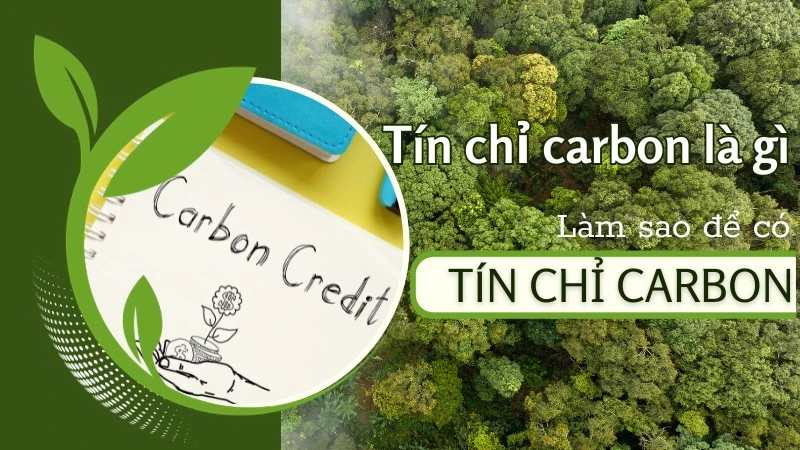Greenhouse gas emissions in agriculture
Greenhouse gas emissions in agriculture
20 March 2024
Several Measures to Mitigate Greenhouse Gas Emissions in Agriculture
Agriculture is responsible for approximately 30% of Vietnam's greenhouse gas emissions, predominantly in the form of CH4 and N2O. With a rising population and an escalating demand for food, the volume of greenhouse gas emissions from agriculture is projected to further increase by 2030. So, what are the reasons for, and solutions to, these agricultural emissions? Join Minmax Green as we delve into this topic in the following article.
Measures to Reduce Greenhouse Gas Emissions in Agriculture (Image Source: Compiled)
An Overview of Greenhouse Gas Emissions in Vietnam's Agriculture
According to Vietnam's 2016 greenhouse gas inventory, the agricultural sector accounts for 30% of the nation's total emissions, equivalent to 98.6 million tons of CO2 equivalent (CO2e). Nonetheless, this sector substantially aids in reabsorption, capturing back 54.6 million tons of CO2e through forest preservation and land management.
Some of the major emission areas include:
-
Rice cultivation - Emitting 49.7 million tons of CO2e, approximately 50% of agricultural emissions.
-
Livestock - Emitting 18.5 million tons of CO2e, roughly 19% of agricultural emissions.
-
Fertilizer use and soil management - Emitting 13.2 million tons of CO2e, about 13% of agricultural emissions.
-
Burning of agricultural residues - Emitting 1.6 million tons of CO2e, around 1.6% of agricultural emissions.
The situation of greenhouse gas emissions in agriculture in Vietnam (Image source: Collected)
Currently, there are three main greenhouse gases identified from the agricultural sector:
-
CO2e emissions at 17.1 million tons.
-
CH4 emissions at 2.38 million tons.
-
N2O emissions at 56.66 thousand tons.
Of these three gases, CH4 and N2O have considerably higher global warming potentials than CO2. Hence, addressing the greenhouse gas sources in agriculture and implementing fitting mitigation strategies is imperative. These solutions will concentrate on areas of rice cultivation, livestock, land management, and fertilization – which presently represent the largest sources of agricultural greenhouse gas emissions.
Current Strategies for Reducing Greenhouse Gas Emissions in Agriculture
Agriculture plays a non-negligible role in the emission of greenhouse gases. Several measures can be applied to diminish the emissions from agricultural activities, such as:
Reducing Emissions from Rice Paddy Farming
The land area dedicated to rice cultivation in our country is approximately 4.1 million hectares, with an annual planting area reaching 7.7 million hectares due to two to three growing seasons per year. On average, each hectare of rice paddy emits 12 tons of CO2e annually, with each growing season contributing 6.5 tons of CO2e. The primary greenhouse gas emitted is CH4, which results from the anaerobic decomposition of organic material in flooded fields. The longer a field remains flooded, the more this type of greenhouse gas is emitted.
Greenhouse gas emissions in rice cultivation sector (Image source: Collected)
In response to greenhouse gas emissions from rice paddy farming being a significant contributor in agriculture, the state has conducted research on solutions and found that alternating wetting and drying irrigation (also known as system rice intensification) can reduce CH4 emissions by up to 3.5 times. However, this method has been limitedly implemented due to significant investments and as yet unproven economic efficiency. As an alternative, transitioning to a rotation of one rice and one upland crop season, instead of two to three rice seasons, or converting to dryland crops or aquaculture, has proven to be economically effective and beneficial for substantial reductions in greenhouse gas emissions.
Mitigating Greenhouse Gas Emissions from Livestock Activities
Livestock activities also contribute significantly to agricultural greenhouse gas emissions. Predominantly, these emanate from CH4 produced by the enteric fermentation of ruminants, and CH4 and N2O released from manure management. According to the 2016 survey, the key sources of greenhouse gas emissions in livestock activities include:
-
Enteric fermentation from ruminant stomachs - Emitting 444 thousand tons of CH4 (equivalent to 12.42 million tons of CO2e).
-
Animal manure - Emitting 11.2 thousand tons of N2O (equivalent to 2.97 million tons of CO2e) and 112 thousand tons of CH4 (equivalent to 3.13 million tons of CO2e).
Emissions in animal husbandry (Image source: Collected)
Among the livestock, the largest CH4 emissions from enteric fermentation are attributed to beef cattle, buffaloes, and dairy cows, while significant CH4 emissions from manure are generated in intensive pig and dairy farming systems due to anaerobic conditions. Moreover, manure application results in N2O emissions when used on acidic and dry soils.
To curtail greenhouse gas emissions from the livestock field, a variety of effective measures is being implemented. The most efficacious current approach is to improve animal diets, thereby enhancing the efficiency of feed usage and concurrently reducing CH4 emissions. Moreover, the use of fermented feed supplements, probiotics, and trace elements has been shown to improve digestion, boost livestock productivity, and lower CH4 emissions into the environment. Nevertheless, effective methods to decrease N2O emissions in livestock activities remain scarce and warrant further research.
Reducing Greenhouse Gas Emissions from Land Management and Fertilizer Use
The use of nitrogen-containing fertilizers is another contributor to agricultural greenhouse gas emissions. Preliminary calculations suggest that the utilization of 1.96 million tons of urea fertilizer in 2016 resulted in 44 thousand tons of N2O emissions (equivalent to 11.8 million tons of CO2e) and 1.4 million tons of CO2. Urea, chemically CO(NH2)2, when applied to wet soils decomposes under the action of urease enzymes into NH4+, OH-, HCO3-, releasing CO2. However, heavy application of nitrogen fertilizers creates an environment conducive for microorganisms to generate N2O—indeed, N2O is the most significant greenhouse gas emission source.
Emissions in fertilizers (Image source: Collected)
The 2016 greenhouse gas inventory identified the following sources of direct N2O emissions:
-
Inorganic fertilizers - Emitting 13.27 thousand tons of N2O (equivalent to 3.52 million tons of CO2e).
-
Animal manure - Emitting 13.35 thousand tons of N2O (equivalent to 3.54 million tons of CO2e).
-
Crop residues - Emitting 2.81 thousand tons of N2O (equivalent to 0.74 million tons of CO2e).
Additionally, N2O is indirectly emitted through volatilization and leaching post-fertilization as NH3 and NOx.
To reduce emissions from nitrogen fertilizer application, several practical solutions have been adopted, such as judicious fertilizer application, the use of slow-release fertilizers instead of urea, improving soil aeration, and reducing soil acidity, among others.
Efforts to Reduce Greenhouse Gas Emissions by Local Governments and Enterprises
In Vietnam, local governments and enterprises have initiated the implementation of measures to reduce greenhouse gas emissions as follows:
-
The Mekong Delta, being the largest rice-producing region in the country, is actively adopting models that curtail greenhouse gas emissions. Among these, the most notable models employ organic farming techniques, water-saving irrigation, and the utilization of agricultural by-products.
-
Several enterprises are embracing advanced farming technologies, aiming for GlobalGAP and organic standards.
-
The Ministry of Agriculture and Rural Development has determined that fostering a green and sustainable agriculture sector is a priority contributing to the achievement of the national green growth objectives for the period 2021 - 2030, with a vision extending to 2050, in accordance with directives from the Prime Minister.
Conclusion
The aforementioned article has provided valuable insights into the prevailing sources of greenhouse gas emissions in agriculture and the corresponding ameliorative measures. It is hoped that through this information, you will gain a deeper understanding of the mechanisms by which greenhouse gases originate from agricultural activities and heighten your environmental consciousness in every aspect of your actions.
—---------------
References:
(1) Some solutions to reduce greenhouse gas emissions in Vietnamese agriculture. http://stnmt.kontum.gov.vn/vi/news/cach-lam-sang-tao-hieu-qua/mot-so-giai-phap-nham-giam-phat-thai-khi-nha-kinh-trong-nong-nghiep-viet-nam-3716.html
Let’s contact us
+84 931 861 313
68 Nguyen Hue, Ben Nghe Ward, District 1, Ho Chi Minh City, Vietnam
team@minmaxgreen.vn




